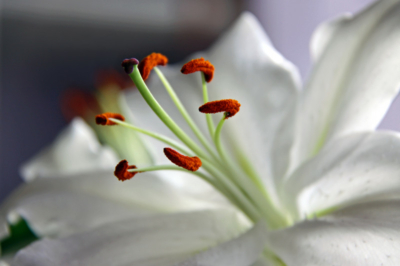Last updated on October 23rd, 2023 at 09:02 pm
If you want to use the seeds to propagate lilies, you can be lucky and get completely new varieties. For (hobby) growers, this is absolutely worth it. What should you know about the seeds and their sowing?

When are the capsule fruits ripe and the seeds ready for harvesting?
After lilies have finished their flowering period and the flowers are withered on the plant, the capsule fruits form.
Forming the seeds cost lilies a lot of power. Therefore, you should cut off the withered inflorescence, if you do not go for the seeds. If you want to harvest the seeds for sowing, wait until the fruits are ripe and burst open. Cut off the fruit and remove the seeds. There are usually numerous seeds in the capsule fruits.
Maturity of the capsule fruits peaks in the fall. The upright capsule fruits, up to 7 cm long and oblong-round, are brown in color at this time and burst open. They have three chambers inside. There, the seeds are closely packed together.
Seed characteristics
The seeds of lilies vary in size depending on the species and variety. They have an average size of 0.5 cm. Furthermore, they are flat, roundish to triangular, narrow winged and dipped in a light brown shade.
Making seeds germinate
The seeds of lilies germinate irregularly. For example, it can take up to 2 years for a seedling to show up. Other seeds germinate after only a few days. Because of this irregularity, it is recommended to sow several seeds at once.
Sowing is done as follows:
- harvest in autumn
- store in the refrigerator or dry
- start sowing between January and February
- soak seeds in water for 3 days
- sow in soil (1 cm deep)
- keep soil moist
- ideal germination temperature (varies from variety to variety): 15 to 20 °C
- planting out from May
- duration until first flowering: 3 to 4 years
Tips & Tricks
If you want to get exceptional varieties with different characteristics than the mother plant, you should cross pollen of different varieties during the flowering period.


